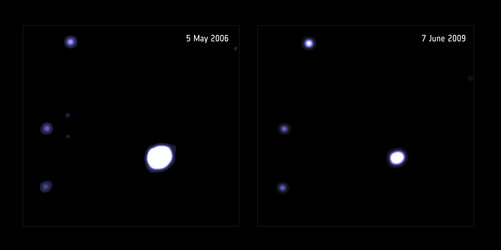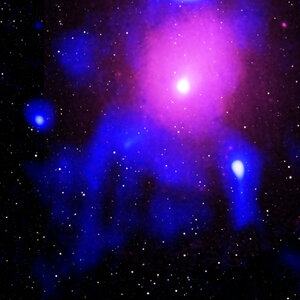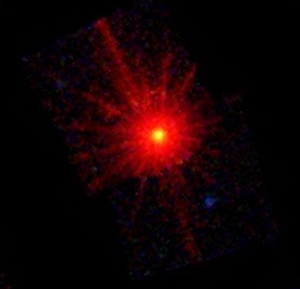Accept all cookies Accept only essential cookies See our Cookie Notice

About ESA
The European Space Agency (ESA) is Europe’s gateway to space. Its mission is to shape the development of Europe’s space capability and ensure that investment in space continues to deliver benefits to the citizens of Europe and the world.
Highlights
ESA - United space in Europe
This is ESA ESA facts Member States & Cooperating States Funding Director General Top management For Member State Delegations European vision European Space Policy ESA & EU Space Councils Responsibility & Sustainability Annual Report Calendar of meetings Corporate newsEstablishments & sites
ESA Headquarters ESA ESTEC ESA ESOC ESA ESRIN ESA EAC ESA ESAC Europe's Spaceport ESA ESEC ESA ECSAT Brussels Office Washington OfficeWorking with ESA
Business with ESA ESA Commercialisation Gateway Law at ESA Careers Cyber resilience at ESA IT at ESA Newsroom Partnerships Merchandising Licence Education Open Space Innovation Platform Integrity and Reporting Administrative Tribunal Health and SafetyMore about ESA
History ESA Historical Archives Exhibitions Publications Art & Culture ESA Merchandise Kids Diversity ESA Brand Centre ESA ChampionsLatest
Space in Member States
Find out more about space activities in our 23 Member States, and understand how ESA works together with their national agencies, institutions and organisations.
Science & Exploration
Exploring our Solar System and unlocking the secrets of the Universe
Go to topicAstronauts
Missions
Juice Euclid Webb Solar Orbiter BepiColombo Gaia ExoMars Cheops Exoplanet missions More missionsActivities
International Space Station Orion service module Gateway Concordia Caves & Pangaea BenefitsLatest
Space Safety
Protecting life and infrastructure on Earth and in orbit
Go to topicAsteroids
Asteroids and Planetary Defence Asteroid danger explained Flyeye telescope: asteroid detection Hera mission: asteroid deflection Near-Earth Object Coordination CentreSpace junk
About space debris Space debris by the numbers Space Environment Report In space refuelling, refurbishing and removingSafety from space
Clean Space ecodesign Zero Debris Technologies Space for Earth Supporting Sustainable DevelopmentApplications
Using space to benefit citizens and meet future challenges on Earth
Go to topicObserving the Earth
Observing the Earth Future EO Copernicus Meteorology Space for our climate Satellite missionsCommercialisation
ESA Commercialisation Gateway Open Space Innovation Platform Business Incubation ESA Space SolutionsLatest
Enabling & Support
Making space accessible and developing the technologies for the future
Go to topicBuilding missions
Space Engineering and Technology Test centre Laboratories Concurrent Design Facility Preparing for the future Shaping the Future Discovery and Preparation Advanced Concepts TeamSpace transportation
Space Transportation Ariane Vega Space Rider Future space transportation Boost! Europe's Spaceport Launches from Europe's Spaceport from 2012Latest

Black hole activity in massive galaxy M87
Thank you for liking
You have already liked this page, you can only like it once!
The core of massive galaxy M87 as viewed in X-rays by ESA’s XMM-Newton space observatory.
A giant elliptical galaxy, M87 is home to several trillion stars, making it one of the most massive galaxies in the local Universe. About 52 million light years away, it is located at the centre of the Virgo cluster, the nearest cluster of galaxies to the Local Group, to which our own Milky Way galaxy belongs.
A supermassive black hole as massive as billions of stars like our Sun sits at the core of M87, accreting material from its surroundings at an extremely intense rate. The black hole’s accretion produces powerful jets that launch energetic particles close to the speed of light outwards into the surrounding cluster environment, as well as inflating giant bubbles that lift cooler gas from the cluster centre and form the filamentary structures visible in this image.
The activity of the black hole also generates shock waves, such as the circular feature that can be seen around the centre of the image.
This view is based on data collected at X-ray energies between 0.3 and 7 keV with the EPIC camera onboard XMM-Newton on 16 July 2017. The image spans 40 arcminutes on each side.
On 10 April 2019, the Event Horizon Telescope (EHT) – a planet-scale array of eight ground-based radio telescopes forged through international collaboration – presented the first direct visual evidence of a supermassive black hole and its shadow: the black hole at the core of M87. The EHT observations were also performed in 2017.
-
CREDIT
ESA/XMM-Newton; Acknowledgement: P. Rodriguez -
LICENCE
ESA Standard Licence

XMM-Newton view of intermediate-mass black hole candidate

The most powerful black hole eruption in the Univers…

The most powerful black hole eruption in the Univers…

The most powerful black hole eruption in the Universe















 Germany
Germany
 Austria
Austria
 Belgium
Belgium
 Denmark
Denmark
 Spain
Spain
 Estonia
Estonia
 Finland
Finland
 France
France
 Greece
Greece
 Hungary
Hungary
 Ireland
Ireland
 Italy
Italy
 Luxembourg
Luxembourg
 Norway
Norway
 The Netherlands
The Netherlands
 Poland
Poland
 Portugal
Portugal
 Czechia
Czechia
 Romania
Romania
 United Kingdom
United Kingdom
 Slovenia
Slovenia
 Sweden
Sweden
 Switzerland
Switzerland

























